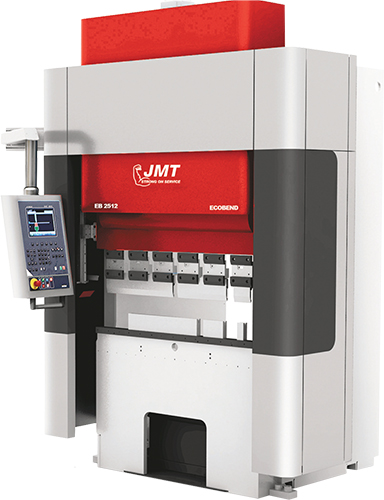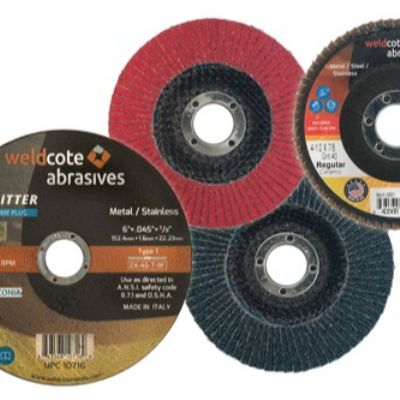When Maintaining Your Press Brake, Be Proactive—Here's How
December 1, 2017Comments
Today's hydraulic press brakes--with their programmable tooling and user-interface technologies--are more advanced than ever, but regular care remains a requirement for long life.
 Having and following a plan is a sound practice when it comes to taking care of your press brake’s mechanical and electrical systems, hydraulic circuit, and tooling. Here, then, are some simple steps to follow.
Having and following a plan is a sound practice when it comes to taking care of your press brake’s mechanical and electrical systems, hydraulic circuit, and tooling. Here, then, are some simple steps to follow.
Make Copies of Your Manual
This first one is the simplest, and one of the more important steps for maintaining your press brake. While your equipment manual likely is found on a CD-ROM computer disc, keep a hard copy with your machine where your operators can use it, perhaps near the electrical panel. Also, keep a hard copy, along with the disc, in a safe storage area away from the machine.
Follow Lubrication Recommendations
Your manual should include a diagram showing required lubrication for parts and a schedule to follow. The schedule is based on an 8-hr. work day, so if you’re running three shifts, you’ll need to lubricate three times sooner. The manual also will include charts and timetables for the hydraulic oil, filters, etc.
Check Hydraulic Circuit
Clean oil and a filled reservoir are critical. A simple visual oil-level check can be performed daily. The same is true of the oil used for hydraulic tool-clamping systems for punch-and-die clamping. Guard against dirt in the oil. Make sure that tank cover seals and air breathers stay in good condition. And, for every 2000 hr. of operation, obtain an oil sample and have your oil supplier check its quality and viscosity, and perform the following:
- Clean or replace filters.
- Check the air filter on the oil-tank cover.
- Check pump and pressure-relieve valves for maximum pressure.
- Clean the tank and suction filters thoroughly.
Evaluate Mechanical Equipment
While a press brake’s mechanical components—piston bolts, chain sprockets and guides—must be checked a minimum of twice yearly, it is best to perform the following regularly:
- Check all bolts and screws for tightness, and if any are loose, check their condition; if they are stretched, replace them.
- Calibrate or realign backgauge and stops.
- Maintain proper clearance between ram gibs according to manufacturer specifications.
Inspect Electrical Equipment
Maintaining your machine’s electrical components requires that you annually check the following:
- Connections on motor terminal strips, relays and terminal boxes;
- Printed circuit boards for physical damage;
- Voltages coming from power supplies and transformers;
- Cables and switches for damage or malfunction;
- Fans for operation; and
- Operation of all machine functions and safety features.
Maintain Tooling
Perform a visual inspection of tooling before each use in order to keep it clean and free from mill scale. Cracked or damaged tooling must be returned to the tooling manufacturer for reconditioning or replacement.
Keep It Clean
Keep your press brake wiped down and clean. Dust and dirt are your machine’s enemies. So, too, is rust. Your machine should have a rust protectant applied to surfaces prone to rusting. Keep the backgauge clean, remove and clean cooling fans and vent filters monthly, keep electrical cabinets closed (except when accessing for safety or cleaning); keep the hydraulic-pump motor clean of dust and dirt; and clean safety lasers daily with a non-abrasive cloth to avoid buildup and scratches. A junk-free press-brake area will help to keep dirt and dust away from the equipment, while improving worker safety and productivity.
When in Doubt, Reboot
If you can’t figure out a problem with your CNC press brake, shut off the machine for 30 sec. to drain power from the circuits, then restart. Do this before calling for repair. Other simple troubleshooting measures:
• If the press brake isn’t running using a new program, try running it with an old program. If it works, an issue may have been created with the new program.
• If there’s a problem with the screen before recalibrating, be sure it’s clean—the natural oil we have on our fingers, plus dirty hands from loading a press brake, can affect the control’s performance. MF
View Glossary of Metalforming Terms
See also: JMH
Technologies: Fabrication
Comments
Must be logged in to post a comment. Sign in or Create an Account
There are no comments posted. Fabrication
FabricationNew Abrasives Line Includes Flap Discs, Quick-Change Discs
Tuesday, May 7, 2019
 Fabrication
FabricationNew Rapid-Delivery Program for Lifting and Positioning Equip...
Tuesday, May 7, 2019
 Fabrication
FabricationRobot Tools for Drilling, Finishing and More
Tuesday, May 7, 2019






